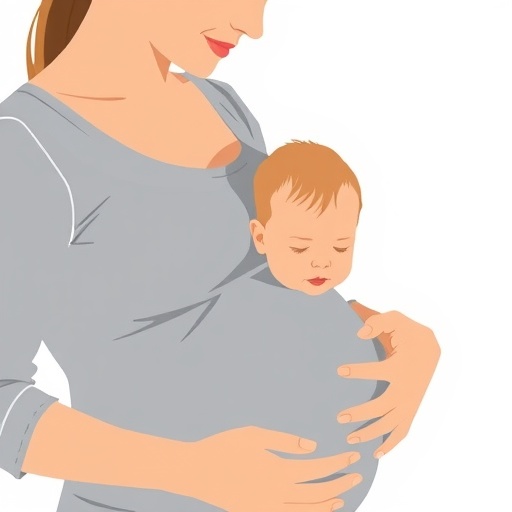In a groundbreaking study published in the Journal of Affective Disorders, researchers from the University of Helsinki, in collaboration with Stockholm University, Karolinska Institutet, and the University of Essex, have employed advanced artificial intelligence techniques to predict early childhood emotional and behavioral difficulties. This research offers a transformative perspective on how intricate prenatal and neonatal factors shape the mental health trajectories of children by the age of five, highlighting unprecedented opportunities for early preventive interventions.
The study’s lead author, doctoral researcher Xu Zong of the University of Helsinki, emphasizes the critical role of early-life risk factors such as lack of breastfeeding, low birth weight, and maternal smoking during pregnancy in forecasting emotional and behavioral problems. Through sophisticated machine learning algorithms, the research team analyzed longitudinal data obtained from nearly 6,000 children across UK households, a dataset rich in prenatal and postnatal variables. Such a large-scale, data-driven examination marks one of the most comprehensive attempts to model the complex interplay of early risk determinants and child mental well-being.
This research hinges on the premise that emotional and behavioral difficulties, which are increasingly prevalent worldwide, can be predicted well before outward symptoms emerge. By focusing on risk factors identifiable from pregnancy through the newborn period, the researchers have opened the door to proactive screening and intervention strategies that target vulnerable populations from the earliest stages of development. This is profoundly important in a global context where mental health resources are often stretched, and early detection can significantly alter outcomes.
A pivotal technical advancement of the study was the deployment of machine learning models capable of analyzing and classifying the predictive significance of fourteen distinct prenatal and neonatal factors. This multivariate analysis uncovered layered relationships often obscured in traditional statistical methods, emphasizing the nuanced influences of these early life exposures. The AI-driven approach allowed for a data-driven hierarchy of risk factors, identifying which elements exert the most substantial influence on later childhood emotional and behavioral health.
One of the study’s fascinating outcomes pertains to sex-specific vulnerability. Boys demonstrated greater susceptibility to the negative impacts of maternal smoking during gestation, a finding that may be attributed to sex-linked biological differences in brain development and toxin metabolism. Conversely, girls were found to be more sensitive to fussiness in infancy, an early behavioral indicator that could presage future emotional regulation challenges. Such sex-differentiated patterns underscore the necessity for gender-responsive policies and screenings in pediatric mental health care.
Xu Zong highlights that these findings arrive at a time when global concern for children’s mental health is intensifying, paralleled by an escalating demand for early intervention programs. The ability to pinpoint children at risk before behavioral symptoms become apparent could revolutionize preventive psychiatry and developmental support, allowing for tailored interventions that mitigate or even prevent the progression of mental health disorders.
Importantly, the study draws attention to the role of modifiable factors, such as breastfeeding and prenatal smoking avoidance, which present tangible targets for public health initiatives. The association of breastfeeding with lower risk for emotional and behavioral difficulties aligns with existing literature emphasizing its myriad developmental benefits. Meanwhile, the detrimental effects of maternal smoking reinforce the critical need for comprehensive prenatal care and smoking cessation programs targeted especially at pregnant individuals.
The use of artificial intelligence in this context exemplifies the growing potential of computational methods to unravel complex biomedical problems. Machine learning algorithms can integrate diverse datasets — spanning physiological, behavioral, and environmental domains — to provide predictive insights with greater precision than conventional approaches. This capacity is particularly valuable in longitudinal cohort studies where multifactorial influences converge over developmental timelines.
While the study offers compelling evidence for early predictive mechanisms, it also calls for further research to validate and refine these AI-driven models across diverse populations and settings. Replication studies and clinical trials incorporating these risk profiles will be central to translating research findings into practical screening tools and intervention protocols used by healthcare providers worldwide.
Moreover, the ethical considerations of predictive analytics in children’s mental health must be carefully navigated. Ensuring that such technological advances are implemented with attention to privacy, consent, and equitable access remains paramount. Integrating AI-driven predictions into clinical workflows will require interdisciplinary collaboration involving data scientists, clinicians, policymakers, and community stakeholders.
In conclusion, this innovative research presents a compelling case for early-life, AI-powered predictive screening as a foundational strategy to combat the rising tide of emotional and behavioral difficulties in children. The findings advocate for substantial investment in preventive care during pregnancy and the neonatal period, emphasizing modifiable risk factors and tailored approaches that consider biological sex differences. As childhood mental health challenges continue to escalate worldwide, this study marks a significant step toward effective early detection and intervention paradigms, promising improved outcomes for future generations.
Subject of Research: Predicting emotional and behavioral difficulties in children using pregnancy and neonatal risk factors through AI analysis.
Article Title: Predicting children’s emotional and behavioural difficulties at age five using pregnancy and neonatal risk factors: Evidence from a longitudinal study of UK households.
News Publication Date: 2025
Web References: http://dx.doi.org/10.1016/j.jad.2025.04.167
References:
Zong, X., Li, Y., Liu, C., & Aguirre, E. (2025). Predicting children’s emotional and behavioural difficulties at age five using pregnancy and neonatal risk factors: Evidence from a longitudinal study of UK households. Journal of Affective Disorders. DOI: 10.1016/j.jad.2025.04.167
Keywords: Demography, prenatal risk factors, neonatal risk factors, emotional difficulties, behavioral difficulties, early intervention, artificial intelligence, machine learning, child mental health, breastfeeding, maternal smoking, low birth weight




